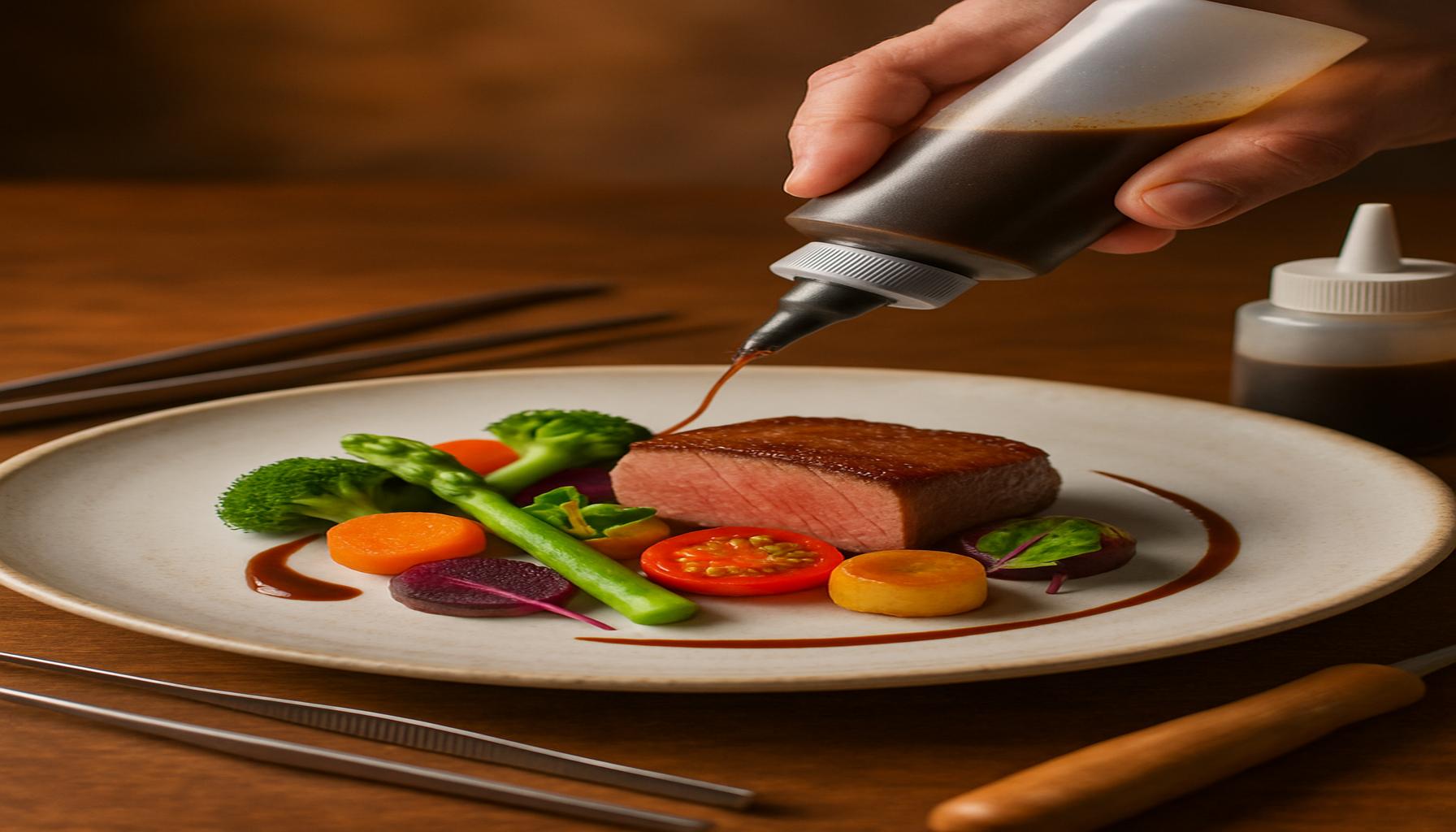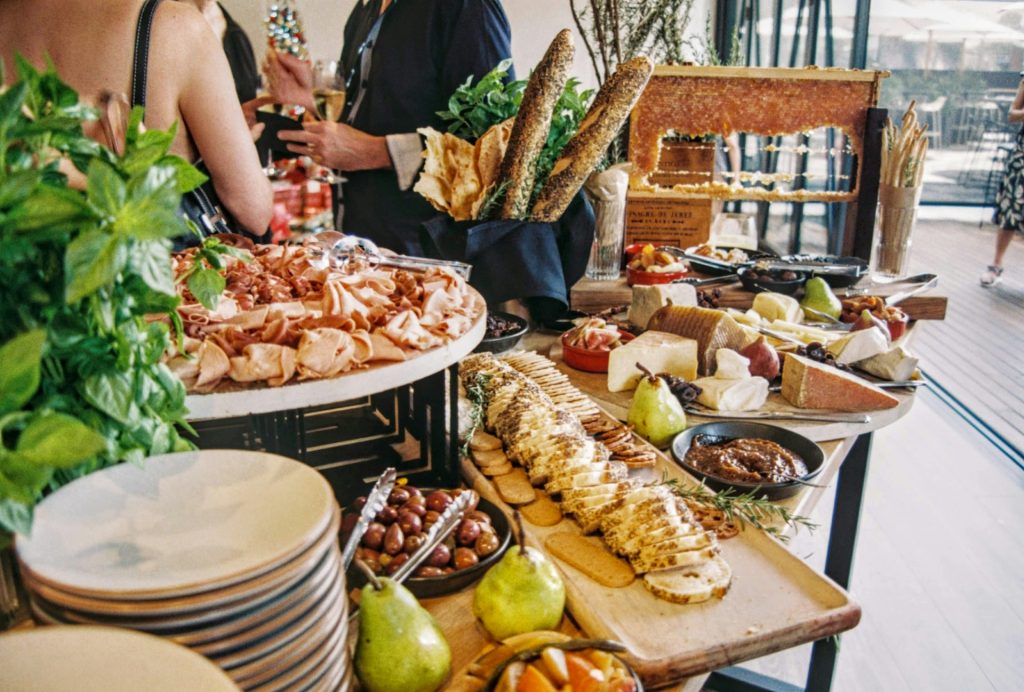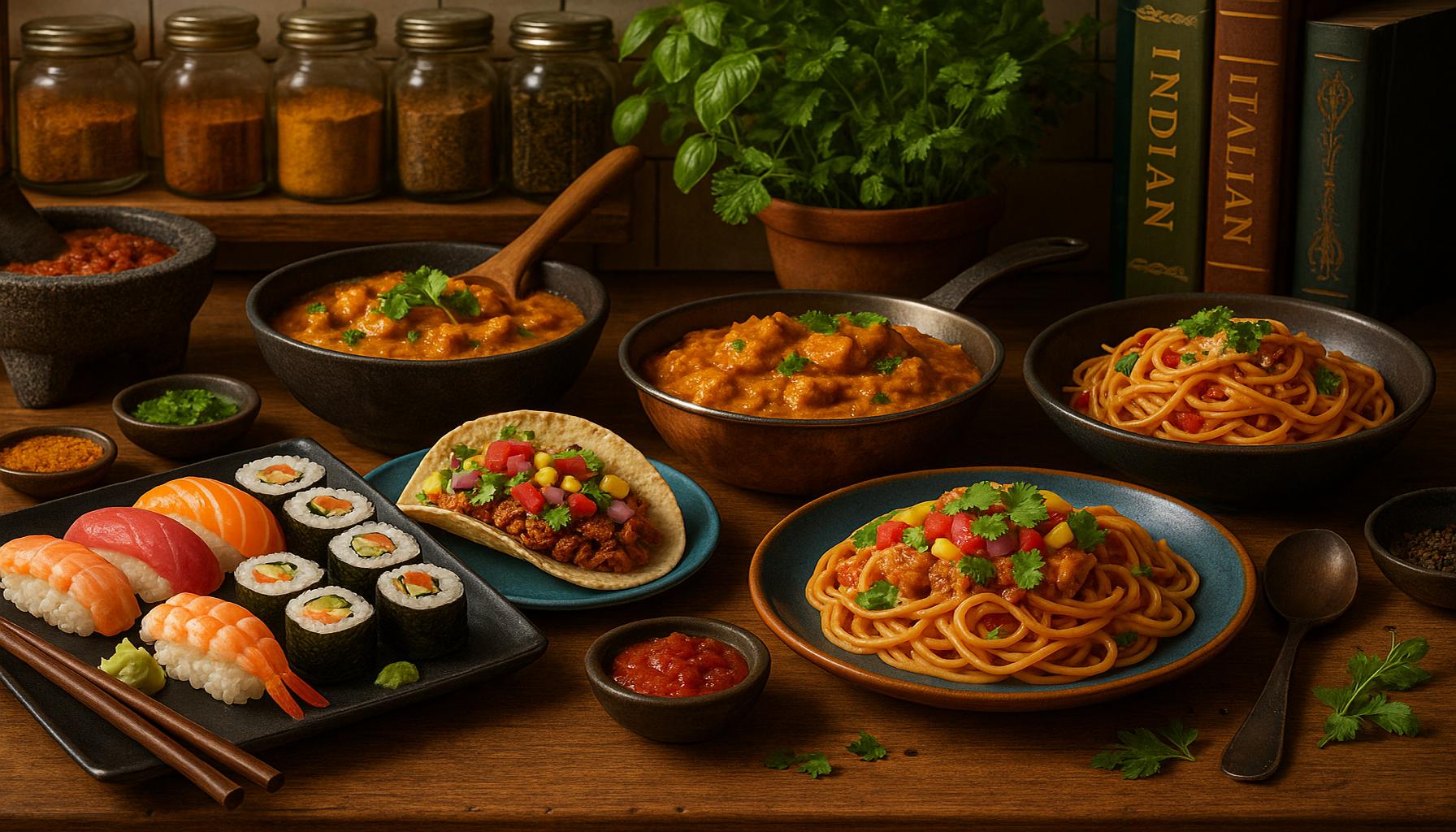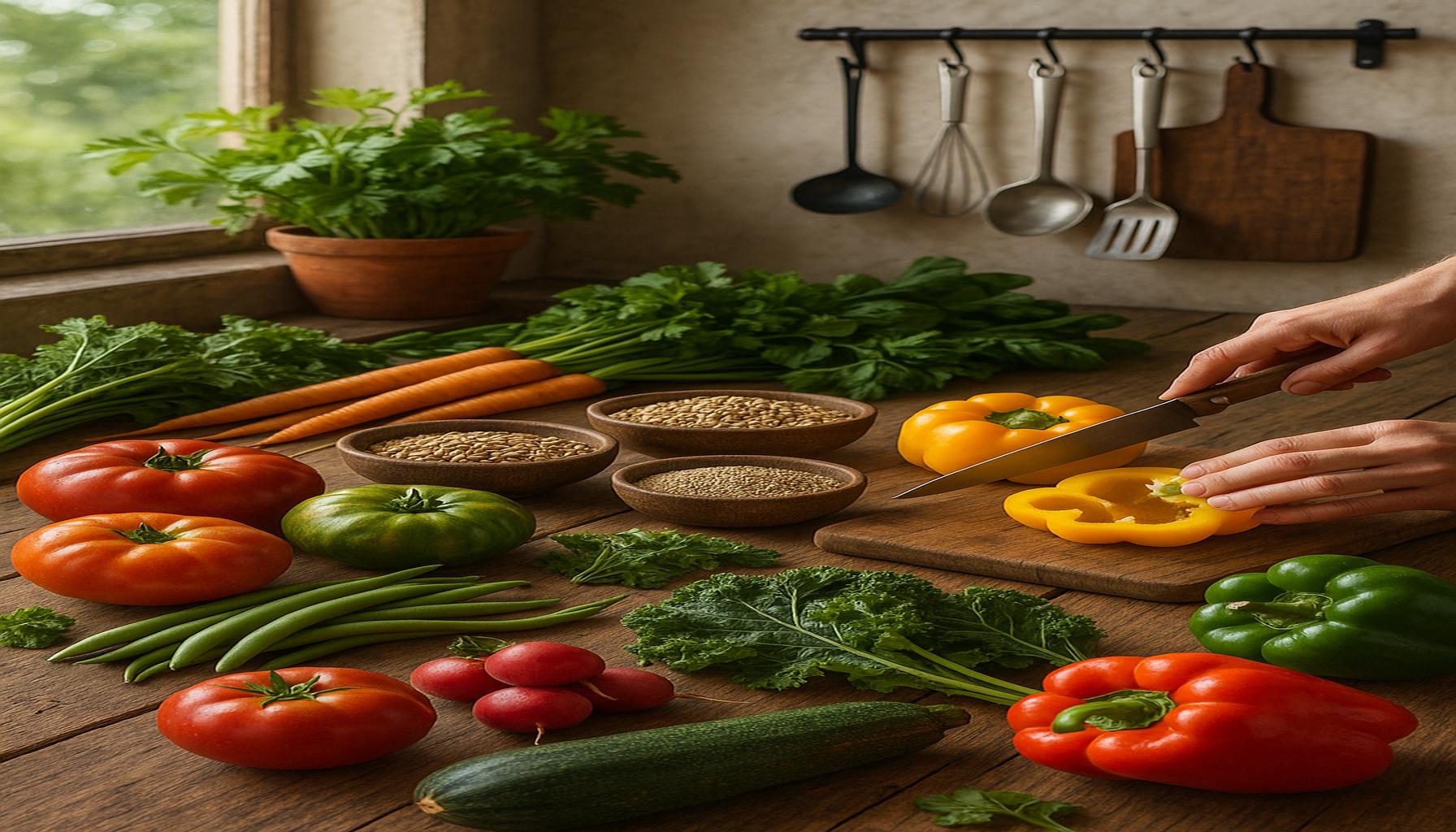Mastering Food Presentation Techniques to Turn Home Dishes into Art

Unleashing Creativity in the Kitchen
The way we present food can transform a simple meal into an unforgettable experience. In recent years, **food presentation** has gained significant traction as both a creative hobby and an essential skill for aspiring chefs and home-cooks alike. Understanding the art of presentation not only enhances the visual appeal of dishes but also elevates the eating experience, making it a fundamental aspect of culinary enjoyment.
Why it Matters
- Boosts Appetite: Visually appealing dishes can stimulate the appetite and make meals more inviting.
- Social Media Influence: The rise of platforms like Instagram has turned food styling into a popular trend, where aesthetics reign supreme.
- Culinary Creativity: Exploring different plating techniques allows you to express your creativity and personal style in the kitchen.
In this article, we will explore some innovative techniques for food presentation and share tips on how to turn ordinary home-cooked dishes into **masterpieces**. From simple garnishes to complex plating styles, discover how you can elevate your culinary creations and impress your family and friends. Stay tuned for our ranking of the **Top 5** food presentation techniques that will change your cooking game forever.
The Art of Presentation: Plating Techniques to Transform Homemade Meals into Masterpieces
In today’s world, where technology pervades every aspect of our lives, the advent of social media and smartphones has dramatically influenced how we view and interact with food. Dining has become as much about the visual pleasure as the taste experience, and remarkable food presentations capture the attention of both diners and digital audiences alike. Transforming the ordinary into the extraordinary requires skillful mastery of various plating techniques. Below, we provide an exploration of the top five methods that can elevate your homemade meals into exquisite works of culinary art, certain to captivate and impress. Let us delve deeper into this fascinating realm and unleash your inner artist chef!
5. Color Contrast
One of the most accessible and effective methods to enhance the visual impact of a dish is through the strategic use of color contrast. Vivid colors play a crucial role in enticing the eye and stimulating the appetite, much like a well-composed painting attracts an art enthusiast. The juxtaposition of complementary or contrasting hues can transform a simple dish into a vibrant tapestry of colors, elevating its allure.
For instance, consider a dish of creamy mashed potatoes adorned with a bright, tangy carrot puree or a vivid beetroot sauce. This visual interplay not only makes the dish pop, but actively engages the senses. To harness the power of color, think about:

- Incorporating ingredients with natural color variety, such as incorporating heirloom tomatoes in salads or mixed bell peppers in stir-fries.
- Using fresh herbs or edible flowers, such as a sprinkle of a finely chopped chive or a few violet petals, adding both color and dimension.
- Balancing the color dynamics by placing dark shades against light backgrounds, or warm tones against cool ones to create visual harmony.
Color contrast is not merely about making food look appealing; it’s a masterstroke that can revolutionize the emotional and sensory experience of dining.
4. Height and Layering
The concept of height and layering in plating can profoundly affect the perception of a dish’s sophistication and complexity. While traditional plating might lean towards spreading food across a plate, incorporating height transforms this into a three-dimensional culinary adventure. This method beckons the audience to explore the layers and nuances of the dish, adding intrigue and allure.
Emphasize verticality with these strategies:
- Stack food components in a way that showcases different textures and flavors from bottom to top, such as a savory crepe stack interspersed with layers of creamy cheeses and crisp greens.
- Employ kitchen tools like molds or ring forms to assemble structured layers, ideal for layered desserts, appetizers like terrines, or composed salads.
- Ornament with vertical elements like tall, slender sprigs of rosemary or curling lemon twists to draw the eye upward and enhance visual interest.
This approach not only makes dishes appear more grandiose and thoughtful but invites the diner to engage more fully with each element of the presentation.
3. Sauces and Drizzles
The deliberate application of sauces and drizzles serves as both a flavor enhancer and an art form in its own right. Beyond mere accompaniment, sauces can act as the unifying element on a plate, bringing disparate components together through creative designs and bold outlines. Techniques range from minimalist dots to elaborate swirls that capture the imagination.
Mastering sauce presentation requires precision and creativity:
- Employ squeeze bottles for controlled pouring, allowing for elegant lines, swirls, or dotted trails across the plate.
- Create contrast and depth by pairing sauces with opposing colors and flavors, akin to a classic balsamic reduction over a light-colored panna cotta.
- Use tools like brushes or spoons to apply sauces in sweeping strokes, mimicking the grace of a painter’s brush on canvas.
Through thoughtful and artistic use of sauces, a plate can be transformed into a rich tapestry of flavor and visual splendor.
2. Use of Negative Space
The concept of negative space in plating can draw attention to the food by allowing it to stand out against a stark, uncluttered background. Just as in visual arts, negative space in culinary presentation provides the elements room to breathe, turning simplicity into sophistication.
Here’s how to expertly apply negative space:
- Intentionally leave areas of the plate empty, allowing the main components to shine without feeling crowded or overwhelming.
- Utilize the natural color of the plate as a canvas, choosing dishware with care to enhance the presentation of the food.
- Think of plating as an art form, where every inch of space is deliberately and thoughtfully crafted for effect.
This minimalist approach not only underscores the beauty of the individual components but also allows diners to focus on the details and craftsmanship within the dish.
1. Theme and Conceptual Plating
Taking the top spot in our exploration is theme and conceptual plating, the pinnacle of culinary artistry. This technique transcends mere presentation, harnessing the power of narrative and emotion to connect with diners on a deeper level. When executed well, it transforms the dining experience into a visual and sensory journey.
To master conceptual plating, consider these elements:
- Develop a cohesive theme that resonates with the dish’s ingredients or cultural origins, like a nautical theme with seafood presented on shells or driftwood-inspired platters.
- Select serveware and utensils that accentuate the theme, enhancing the cohesiveness of the presentation.
- Craft a narrative or story through plating, using edible elements to symbolize different facets of the tale—perhaps a winter scene with elements resembling snow and ice.
Conceptual plating not only refines the art of presentation but invites diners into a world of culinary storytelling. This technique exemplifies how plating can transcend its functional role to become a powerful medium for artistic expression and interaction.
In conclusion, the art of food presentation is a multifaceted craft that combines visual aesthetics with culinary technique. Whether through vibrant color contrasts, towering layers, or intricate sauce interplays, each plate offers an opportunity to delight the senses and elevate the dining experience to new heights. The techniques shared here serve as a canvas for your creativity, inviting experimentation and discovery. Embrace these methods to transform your kitchen endeavors into striking culinary masterpieces worthy of admiration—and social media acclaim. Now, it’s your turn to innovate and impress, one beautifully plated dish at a time.
One of the pivotal aspects of the art of plating is understanding the balance of components on the plate. A well-composed dish not only satisfies the palate but also pleases the eye. This is where the principles of design come into play, as chefs curate their creations with an artist’s touch. The use of color, texture, and height can dramatically transform a simple dish into an enticing visual masterpiece.A strong technique to master is the rule of thirds. This concept, borrowed from photography, suggests that a plate can be divided into three equal parts, horizontally and vertically, creating nine sections in total. By strategically placing your main component in one of the intersections while using the remaining space for garnishes and sauces, you can create a harmonious balance that draws the eye across the plate.In addition to composition, textural variety is essential in creating an engaging dish. A plate that features a combination of crispy, creamy, and tender components can provide an exhilarating eating experience. Furthermore, contrasting colors not only enhance appearance but can also indicate freshness and quality. For instance, the vibrant green of fresh herbs juxtaposed against a rich, golden sauce not only makes a dish visually appealing but also suggests a burst of flavor.Another critical element of plating is the use of negative space. This refers to the blank areas on the plate that can serve to accentuate the food itself. Employing negative space wisely can elevate the overall aesthetic of the presentation, making the focal ingredients stand out more prominently. It’s a sophisticated strategy that, when executed correctly, showcases the chef’s artistry and attention to detail.Furthermore, garnishing plays a crucial role in enhancing your dish. While it might seem superfluous to some, a thoughtfully chosen garnish can elevate the overall profile of the dish. There is an array of choices, from microgreens and edible flowers to artistic drizzles of sauce, which can add a pop of color and a subtle hint of flavor. Choosing the right garnish is about ensuring it complements rather than overwhelms the main ingredients.Technology also plays a significant role in modern culinary presentations. With advancements in kitchen tools, chefs can utilize syringes for sauces, squeeze bottles for precision, and even tools like ethereal foams and gels to introduce new textures and flavors on the plate. These innovations not only allow chefs to showcase their creativity but also enhance the dining experience for those fortunate enough to be served these plates.In summary, mastering the art of plating requires an understanding of composition, color, texture, negative space, garnishing, and the use of modern culinary techniques. Each element contributes to the visual and gustatory appeal of a dish, turning a simple meal into a feast for the senses. Engaging with these techniques can inspire both home cooks and professional chefs alike to elevate their culinary creations, ensuring that every plate served becomes a work of art in its own right.
Frequently Asked Questions: The Art of Plating Presentation
What is the importance of plating in culinary presentation?
The art of plating goes beyond making food look appealing; it plays a crucial role in enhancing the dining experience. The way a dish is presented can significantly affect our perception of its taste. Studies have shown that customers are willing to pay more for a meal that is aesthetically pleasing. Plating is about balancing aesthetics and functionality, ensuring that each component of the dish contributes to both the visual appeal and the flavor profile.
Are professional tools necessary for creating artistic presentations at home?
While professional chefs often use specialized tools for precise plating, you can achieve impressive results at home with some basic kitchen tools. Items like tweezers for placing small garnishes, squeeze bottles for sauces, and spatulas can be incredibly useful. The key is to be creative and resourceful with what you have. Ultimately, practice and experimentation are more important than having a professional toolkit.
How can someone learn to improve their plating techniques?
Improving your plating techniques involves both study and practice. Start by familiarizing yourself with basic principles such as balance, contrast, and composition. Observing the work of professional chefs, whether through cookbooks, online tutorials, or cooking shows, can provide invaluable insights. Practices such as sketching your plating ideas before execution can help refine your approach. Remember, perspective and adaptation are your best tools for continuous improvement.
What are some common mistakes to avoid in plating?
One frequent mistake is overcrowding the plate, which can detract from the overall presentation and overwhelm the diner. Each component should have a purpose and sufficient space to shine. Another common error is not considering the color palette; contrasting colors can enhance the visual appeal of a dish. Also, avoid using too many garnishes, as they can distract from the main elements of the dish. Simplicity and focus are essential in artful plating.
Conclusion
The journey through the art of plating, as explored in “A Arte da Apresentação: Técnicas de Empratamento para Transformar Pratos Caseiros em Obras de Arte”, highlights how creative presentation can transcend a mere meal into a captivating visual experience. This article delved into the intriguing intersection between culinary skills and artistic expression, offering a new lens through which to approach cooking as a creative hobby.
From understanding the fundamentals of color balance to mastering the strategic placement of ingredients, each aspect contributes to elevating home-cooked dishes to the status of artwork. Techniques such as creating layers, utilizing negative space, and incorporating textures and garnishes were emphasized as key tools to enhance visual appeal. Together, these elements not only enhance the aesthetic value of a dish but also make the overall dining experience more enjoyable and memorable.
The most significant takeaway is that plating is an art form accessible to anyone willing to experiment and learn. It’s a creative process that invites unlimited exploration, making it an exciting endeavor for culinary enthusiasts. Furthermore, this art also influences our perception of taste, demonstrating that how we present food can profoundly affect its flavor profile.
The creative power of plating is undeniable, offering endless opportunities for personal expression in the kitchen. By adopting these techniques, home cooks can transform their everyday culinary practices into a cherished hobby that blurs the line between food and art. As you continue on this creative journey, remember that the true beauty of plating lies in its ability to reflect your individuality and passion. Let this be an invitation to further investigate and innovate, turning each dish into a personalized masterpiece that inspires both the eyes and the palate.


